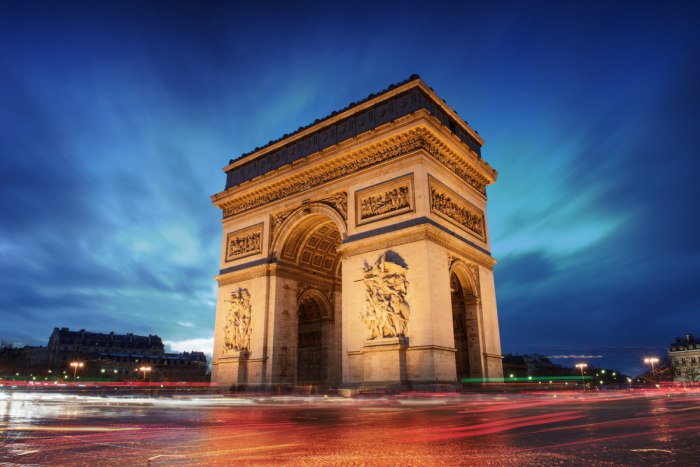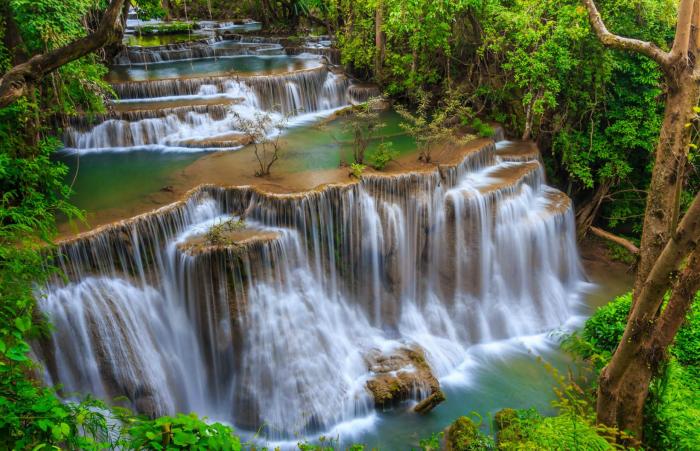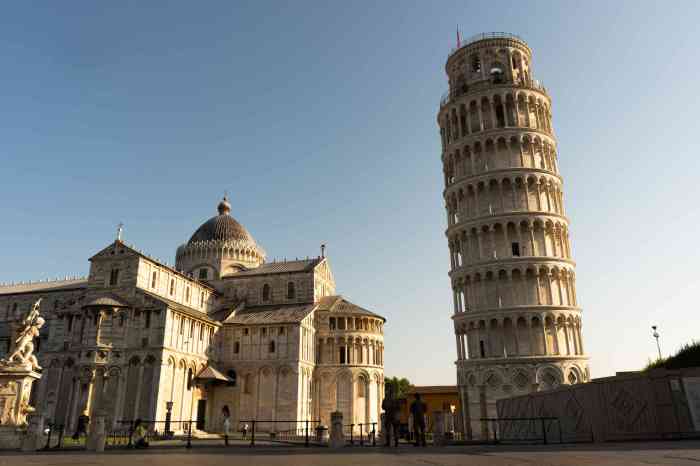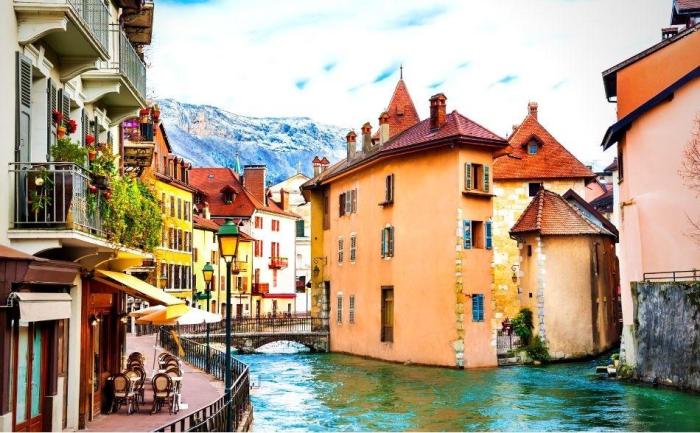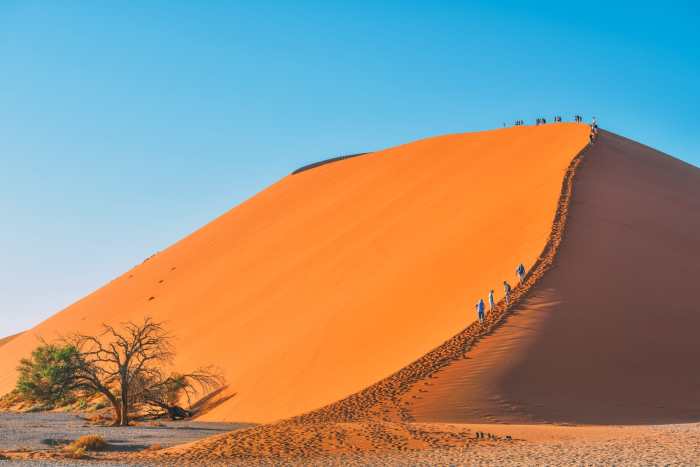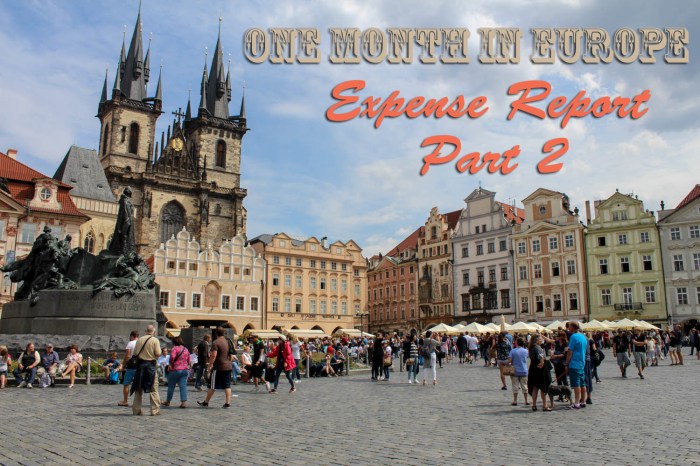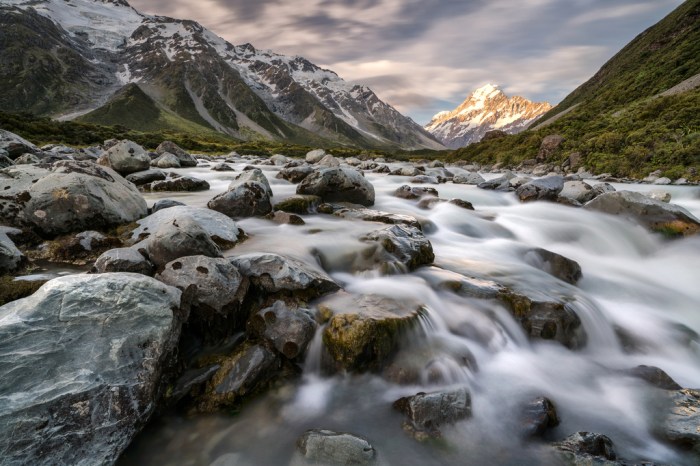Top 10 Places To Visit In France
Top 10 Places To Visit in France takes center stage, and this opening passage invites you to a world crafted with knowledge and a touch of fun. France, a country steeped in history, art, and culinary delights, offers an unparalleled travel experience.
From the iconic Eiffel Tower in Paris to the lavender fields of Provence, this guide unveils the top 10 destinations that will leave you enchanted. Whether you’re a history buff, a foodie, or an adventure seeker, France has something to offer everyone.
Prepare to be captivated by the charm of Paris, the allure of the French Riviera, the grandeur of the Loire Valley, and the breathtaking beauty of the Alps. Discover the artistic heritage of Provence, the historical significance of Normandy, and the world-renowned wine region of Bordeaux.
Explore the Alsatian charm of Strasbourg, the culinary capital of Lyon, and the Mediterranean charm of Montpellier. This guide is your passport to an unforgettable journey through the heart of France.
Paris
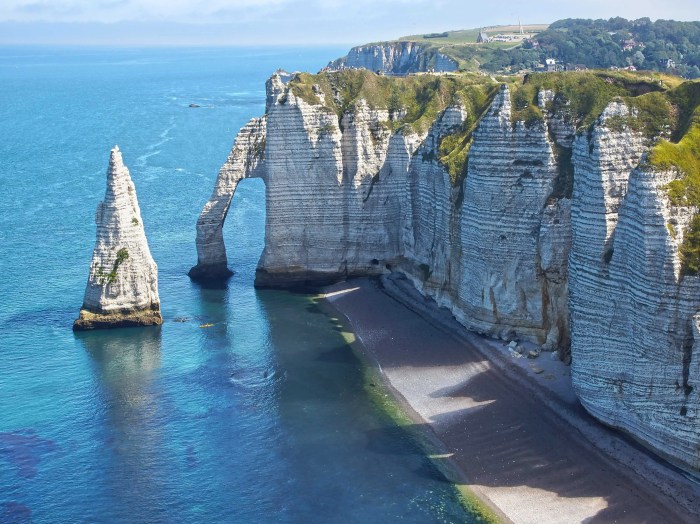
Paris, the City of Lights, is a global metropolis renowned for its iconic landmarks, rich history, and unparalleled charm. From the majestic Eiffel Tower to the world-famous Louvre Museum, Paris offers a captivating blend of architectural wonders, artistic masterpieces, and culinary delights.
Iconic Landmarks
Paris is home to some of the world’s most recognizable landmarks, each with its own unique story and significance.
- Eiffel Tower:This wrought-iron lattice tower, constructed for the 1889 World’s Fair, has become a symbol of Paris. Visitors can ascend to its three levels for breathtaking panoramic views of the city.
- Louvre Museum:Housing one of the world’s largest and most comprehensive art collections, the Louvre is a must-visit for art enthusiasts. Its most famous resident is the enigmatic Mona Lisa, a masterpiece by Leonardo da Vinci.
- Notre Dame Cathedral:This magnificent Gothic cathedral, a masterpiece of French architecture, has stood on the Île de la Cité since the 12th century. While undergoing restoration following a fire in 2019, its iconic towers and stained-glass windows remain a symbol of Paris’s enduring spirit.
- Arc de Triomphe:This triumphal arch, built to commemorate French military victories, stands at the end of the Champs-Élysées. Its imposing structure and intricate carvings offer a glimpse into France’s rich history.
Parisian Neighborhoods
Paris is a city of diverse neighborhoods, each with its own unique character and attractions.
- Montmartre:Situated on a hill in the 18th arrondissement, Montmartre is known for its bohemian atmosphere, cobblestone streets, and the iconic Sacré-Cœur Basilica. It was once a haven for artists and writers, and its artistic legacy continues to inspire today.
- Le Marais:Located in the 3rd and 4th arrondissements, Le Marais is a historic district with a vibrant Jewish community and a lively gay scene. Its charming streets are lined with boutiques, galleries, and cafes.
- Saint-Germain-des-Prés:This chic neighborhood in the 6th arrondissement is known for its literary and intellectual heritage. It is home to cafes like Les Deux Magots and Café de Flore, which have hosted some of the most influential thinkers and artists of the 20th century.
Culinary Scene
Paris is a culinary paradise, offering a diverse range of dining experiences.
- Renowned Restaurants:Paris is home to some of the world’s finest restaurants, including Michelin-starred establishments like Le Bernardin and Guy Savoy. These restaurants offer innovative and exquisite cuisine, showcasing the best of French gastronomy.
- Bistros:Paris is also known for its traditional bistros, offering classic French dishes in a cozy and welcoming atmosphere. These bistros often feature menus with daily specials, showcasing seasonal ingredients.
- Patisseries:No trip to Paris is complete without indulging in the city’s famous pastries. From the iconic macarons of Ladurée to the buttery croissants of Boulangerie Poilâne, Parisian patisseries are a delight for the senses.
3-Day Itinerary
A 3-day itinerary in Paris allows for a taste of the city’s highlights.
Day 1: Iconic Landmarks and Art
- Morning: Start your day with a visit to the Eiffel Tower, taking in the panoramic views from the top.
- Afternoon: Explore the Louvre Museum, admiring masterpieces like the Mona Lisa and Venus de Milo.
- Evening: Enjoy a romantic dinner at a bistro in the Latin Quarter, followed by a stroll along the Seine River.
Day 2: Historic Districts and Culinary Delights
- Morning: Discover the charming streets of Le Marais, visiting the Place des Vosges and the Musée Carnavalet.
- Afternoon: Take a walking tour of Notre Dame Cathedral, marveling at its Gothic architecture.
- Evening: Indulge in a Parisian culinary experience at a Michelin-starred restaurant, savoring the exquisite flavors of French gastronomy.
Day 3: Bohemian Montmartre and Shopping
- Morning: Explore the bohemian neighborhood of Montmartre, visiting the Sacré-Cœur Basilica and the Place du Tertre.
- Afternoon: Discover the chic boutiques and designer stores of the Champs-Élysées, indulging in some retail therapy.
- Evening: Conclude your trip with a farewell dinner at a traditional bistro, savoring the flavors of Parisian cuisine.
The French Riviera
Imagine sun-drenched beaches, sparkling azure waters, and a vibrant atmosphere where luxury and glamour reign supreme. This is the French Riviera, a coastal region in southeastern France that has captivated the hearts of travelers and celebrities for over a century.
From the bustling city of Nice to the glamorous principality of Monaco, the French Riviera offers a captivating blend of natural beauty, cultural richness, and unparalleled sophistication.
Beaches of the French Riviera
The French Riviera is renowned for its stunning beaches, each offering its own unique charm and allure. Here are some of the most popular and unforgettable beaches along this iconic coastline:
- Plage de la Garoupe (Antibes):This picturesque beach is known for its crystal-clear waters and charming ambiance. It’s a popular spot for families and those seeking a tranquil escape from the city’s hustle and bustle. The beach offers a variety of amenities, including restaurants, cafes, and watersports rentals.
- Plage de la Salis (Cannes):Located in the heart of Cannes, this beach offers stunning views of the Mediterranean Sea and the iconic Îles de Lérins. It’s a popular spot for sunbathing, swimming, and enjoying the vibrant atmosphere of the French Riviera.
- Plage du Larvotto (Monaco):This world-famous beach is known for its luxurious ambiance and stunning views of the Mediterranean Sea. It’s a popular spot for celebrities and those seeking a sophisticated beach experience. The beach offers a variety of amenities, including restaurants, cafes, and watersports rentals.
- Plage de Pampelonne (Saint-Tropez):This iconic beach is known for its pristine sands, crystal-clear waters, and lively atmosphere. It’s a popular spot for celebrities, socialites, and those seeking a glamorous beach experience. The beach offers a variety of amenities, including restaurants, cafes, and watersports rentals.
The Cannes Film Festival
The Cannes Film Festival, held annually in May, is one of the most prestigious film festivals in the world. It has been held in Cannes since 1946 and has become a global symbol of cinematic excellence. The festival attracts filmmakers, actors, and film enthusiasts from all over the world, creating a vibrant atmosphere of creativity and excitement.
The festival’s red carpet has become a global spectacle, with celebrities showcasing their latest fashion trends. The Cannes Film Festival has had a profound impact on the French Riviera, boosting its tourism industry and cementing its status as a global center for film and entertainment.
The festival has also inspired numerous films and television shows, showcasing the region’s beauty and allure to a global audience.
Architectural Marvels and Luxurious Resorts
The French Riviera is home to a wealth of architectural marvels and luxurious resorts, reflecting its rich history and unparalleled sophistication. The region’s iconic architecture, from grand villas to modern skyscrapers, showcases a unique blend of styles, from Belle Époque to Art Deco.
Some of the most notable architectural landmarks include:
- Villa Ephrussi de Rothschild (Saint-Jean-Cap-Ferrat):This magnificent villa, built in the early 20th century, is a masterpiece of Belle Époque architecture. It features intricate gardens, opulent interiors, and stunning views of the Mediterranean Sea. The villa is a testament to the wealth and grandeur of the French Riviera’s golden age.
- Villa Kérylos (Beaulieu-sur-Mer):This stunning villa, built in the early 20th century, is a replica of an ancient Greek house. It features a unique blend of architectural styles, from classical Greek to modern French. The villa is a testament to the region’s fascination with ancient civilizations and its commitment to preserving its cultural heritage.
- Hôtel du Cap-Eden-Roc (Antibes):This legendary hotel, perched on a cliff overlooking the Mediterranean Sea, is a symbol of luxury and glamour. It has hosted countless celebrities and dignitaries, including F. Scott Fitzgerald, Pablo Picasso, and Elizabeth Taylor. The hotel’s stunning architecture, impeccable service, and breathtaking views make it a truly unforgettable destination.
The Loire Valley
The Loire Valley, often referred to as the “Garden of France,” is a picturesque region in central France renowned for its captivating blend of history, culture, and natural beauty. This enchanting region, dotted with magnificent castles and rolling vineyards, has long been a source of inspiration for artists, writers, and travelers alike.
Historical Significance
The Loire Valley’s historical significance is deeply intertwined with its royal past. For centuries, it served as the favored hunting ground and residence of French royalty. The Loire Valley’s strategic location and fertile land made it an ideal location for the construction of imposing chateaux, which served as both opulent palaces and fortified strongholds.
These grand structures, each with its unique architectural style and fascinating history, stand as testaments to the region’s rich heritage.
Impressive Castles
The Loire Valley boasts a collection of breathtaking castles that are architectural marvels.
- Chambord: The largest and most recognizable castle in the Loire Valley, Chambord is a masterpiece of Renaissance architecture. Its iconic double-helix staircase and intricate facade are a testament to the ingenuity of its designers.
- Chenonceau: This elegant castle, known as the “Castle of the Ladies,” is built on a bridge over the Cher River. Its graceful architecture and beautiful gardens have made it a popular destination for centuries.
- Villardry: Villardry is renowned for its exceptional gardens, which are considered among the most beautiful in France. Its intricate geometric patterns and vibrant flower displays offer a tranquil and captivating experience.
Renowned Wines
The Loire Valley is a renowned wine-producing region, with a diverse range of wines that reflect the region’s unique terroir. The valley’s diverse soils and microclimates create ideal conditions for producing exceptional wines.
- Sancerre: Sancerre is known for its crisp and refreshing Sauvignon Blanc wines, characterized by their zesty acidity and aromas of citrus and gooseberry.
- Vouvray: Vouvray is famous for its Chenin Blanc wines, which can range from dry and crisp to sweet and complex. Vouvray wines often display notes of honey, apricot, and citrus.
- Chinon: Chinon is known for its red wines made from the Cabernet Franc grape. These wines are typically full-bodied and have a distinctive earthy character with notes of black cherry and spice.
Two-Day Itinerary
A two-day itinerary allows for a glimpse into the Loire Valley’s captivating blend of history, culture, and culinary delights.
Day 1: Castles and Cuisine
- Start your day with a visit to the majestic Chambordcastle, marveling at its imposing facade and exploring its grand interiors.
- In the afternoon, journey to Chenonceau, known for its elegant architecture and beautiful gardens. Take a leisurely stroll through the gardens and learn about the castle’s fascinating history.
- In the evening, indulge in a traditional French dinner at a charming restaurant in the town of Amboise, known for its medieval castle and vibrant atmosphere.
Day 2: Wine and Nature
- Begin your day with a visit to a local winery in the Sancerreregion, where you can sample the region’s renowned Sauvignon Blanc wines.
- After your wine tasting, take a scenic drive through the rolling vineyards of the Vouvrayregion, stopping at a charming vineyard for a lunch of local delicacies.
- In the afternoon, enjoy a leisurely walk through the enchanting gardens of Villandry, admiring the intricate geometric patterns and vibrant flower displays.
The Alps
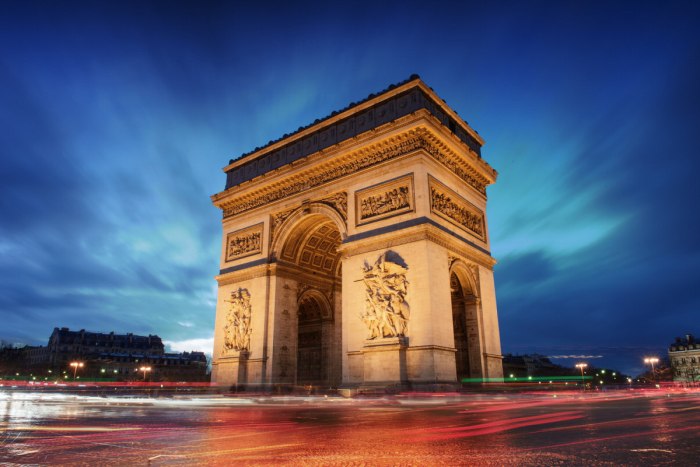
Imagine towering peaks piercing the sky, pristine glaciers shimmering in the sunlight, and charming villages nestled amidst rolling meadows. Welcome to the French Alps, a breathtaking region that captivates visitors with its majestic beauty and endless opportunities for adventure.
Skiing and Snowboarding in the Alps
The French Alps are renowned for their world-class ski resorts, attracting skiers and snowboarders from around the globe. Resorts like Chamonix and Courchevel offer a diverse range of slopes for all skill levels, from gentle beginner runs to challenging black diamonds.
- Chamonix, located at the foot of Mont Blanc, Europe’s highest peak, is a legendary ski destination known for its challenging off-piste terrain and stunning views.
- Courchevel, part of the vast Three Valleys ski area, is renowned for its luxurious accommodations, extensive slopes, and vibrant après-ski scene.
Outdoor Activities in the Alps
Beyond skiing and snowboarding, the French Alps offer a plethora of outdoor activities to satisfy every adventure seeker.
- Hiking: Explore the region’s extensive network of trails, leading you through lush valleys, past cascading waterfalls, and to panoramic viewpoints.
- Rock Climbing: Challenge yourself on the sheer rock faces of the Alps, with routes ranging from beginner-friendly to expert-level.
- Mountain Biking: Pedal through scenic trails, traversing challenging climbs and exhilarating descents, offering breathtaking views at every turn.
- Rafting and Kayaking: Experience the thrill of navigating the rushing waters of the Alps’ rivers, surrounded by stunning scenery.
Alpine Culture and Cuisine
The French Alps boast a rich cultural heritage, deeply rooted in its traditions and way of life.
- Alpine Villages: Discover charming villages with traditional wooden chalets, cobblestone streets, and a warm, welcoming atmosphere.
- Local Specialties: Indulge in the region’s hearty cuisine, featuring dishes like fondue, raclette, and tartiflette, made with local ingredients and cheeses.
Provence
Provence, a region in southeastern France, is a place where beauty and history intertwine. Its rolling hills, charming villages, and iconic lavender fields paint a picture of pure enchantment. The region’s rich artistic heritage, coupled with its delectable cuisine, makes Provence a destination that captivates the senses.
Towns to Explore
Provence boasts a collection of captivating towns that offer a glimpse into the region’s history, culture, and charm. Here are some must-visit destinations:
- Aix-en-Provence:This vibrant city is known for its elegant fountains, bustling markets, and historic buildings. Its charming streets are lined with cafes and boutiques, offering a delightful atmosphere for strolling and exploring.
- Avignon:A medieval city with a fascinating past, Avignon is home to the majestic Palais des Papes, a former papal palace. The city’s historic walls encircle the old town, creating a unique and picturesque setting.
- Arles:This ancient city, steeped in Roman history, is famous for its Roman Amphitheatre and the works of Vincent van Gogh, who was inspired by its unique landscape. Arles is a vibrant hub of art, culture, and history.
The Artistic Legacy of Provence, Top 10 Places To Visit in France
Provence has long been a magnet for artists, captivated by its breathtaking landscapes and captivating light. The region’s artistic legacy is evident in the works of renowned painters such as Vincent van Gogh and Paul Cézanne.
- Vincent van Gogh:During his stay in Arles, Van Gogh was inspired by the region’s vibrant colors and landscapes. His iconic paintings, such as “The Starry Night” and “Sunflowers,” capture the essence of Provence’s beauty and artistic spirit.
- Paul Cézanne:Known for his groundbreaking techniques and his exploration of form and color, Cézanne found inspiration in the landscapes of Aix-en-Provence. His paintings, such as “Mont Sainte-Victoire,” reflect his deep connection to the region and its natural beauty.
A Culinary Journey Through Provence
Provence’s cuisine is a symphony of flavors, reflecting the region’s bounty of fresh ingredients.
- Olive Oil:Provence is renowned for its high-quality olive oil, produced from local olive groves. Its fruity and peppery notes add a distinctive flavor to many Provençal dishes.
- Herbs:The region’s aromatic herbs, such as thyme, rosemary, and lavender, infuse dishes with a fragrant and herbaceous flavor.
- Wine:Provence is known for its rosé wines, which are light, refreshing, and perfect for enjoying on a sunny afternoon.
Normandy
Normandy is a region in northwestern France known for its stunning coastline, rolling countryside, and rich history. From the iconic D-Day landings to the picturesque Mont Saint-Michel, Normandy offers a unique blend of historical significance, natural beauty, and cultural charm.
Historical Significance
Normandy played a pivotal role in World War II, particularly during the Allied invasion of Europe on June 6, 1944, known as D-Day. The Normandy landings were a turning point in the war, marking the beginning of the liberation of Western Europe from Nazi occupation.
The beaches of Normandy, such as Omaha and Utah, are now memorials to the bravery of the soldiers who fought and died during the invasion. The Battle of Normandy, which lasted for several months, was a crucial battle in the war, resulting in heavy casualties on both sides.
Must-Visit Sites in Normandy
Normandy boasts a diverse range of historical sites, scenic landscapes, and cultural attractions that make it a must-visit destination. Here are some of the most notable sites:
- Omaha Beach:One of the five main landing beaches during D-Day, Omaha Beach is a poignant reminder of the sacrifices made during the war. Visitors can explore the beach, the American Cemetery, and the Normandy American Cemetery and Memorial, which honors the fallen soldiers.
- Utah Beach:Another significant D-Day landing beach, Utah Beach was the site of the American 4th Infantry Division’s successful landing. The Utah Beach Museum provides detailed information about the invasion and the role of the American forces.
- The Bayeux Tapestry:This 70-meter-long embroidered cloth depicts the Norman conquest of England in 1066. It is a remarkable historical artifact that offers a glimpse into the events that shaped the history of both England and France.
- Mont Saint-Michel:This iconic island monastery, located off the coast of Normandy, is a UNESCO World Heritage Site. The breathtaking views from the abbey and the surrounding tidal flats make it a truly unforgettable experience.
- The D-Day Landing Beaches:A visit to the D-Day landing beaches, including Sword Beach, Juno Beach, and Gold Beach, offers a moving and educational experience. The beaches are now memorials to the fallen soldiers and the courage of those who fought for freedom.
- The American Cemetery and Memorial:Located in Colleville-sur-Mer, this cemetery is a solemn and moving tribute to the American soldiers who died during the Normandy campaign. The cemetery offers a beautiful and peaceful setting to reflect on the sacrifices made during the war.
- The Pegasus Bridge:This bridge, located near Caen, was captured by British paratroopers on the night before D-Day. It is a testament to the bravery and skill of the British soldiers who played a crucial role in the success of the invasion.
Cider Production in Normandy
Normandy is renowned for its traditional cider production, which dates back centuries. The region’s unique climate and soil conditions create ideal growing conditions for apple trees, resulting in a wide variety of apples used for cider making. Cider is an integral part of Norman culture, enjoyed by locals and visitors alike.
- Apple Varieties:Normandy is home to over 100 varieties of apples, each with its own unique flavor profile. Some of the most common varieties used for cider production include the bittersweet “Cidre” apple and the sharp “Bitter” apple.
- Traditional Production:The traditional cider-making process in Normandy involves pressing the apples, fermenting the juice, and aging the cider in oak barrels. The resulting cider is typically dry and tart, with a complex flavor profile that reflects the unique blend of apples used.
- Cultural Significance:Cider is an important part of Norman culture, enjoyed at festivals, celebrations, and everyday meals. The region’s numerous cider producers offer a wide range of ciders, from traditional to modern, catering to diverse tastes.
2-Day Itinerary for Exploring Normandy
- Day 1:
- Start your day by visiting Omaha Beach and the American Cemetery and Memorial. Take a guided tour to learn more about the D-Day landings and the sacrifices made by the soldiers who fought in the battle.
- After lunch, explore the picturesque town of Bayeux and visit the Bayeux Tapestry, a UNESCO World Heritage Site. The tapestry offers a fascinating glimpse into the Norman conquest of England.
- In the evening, enjoy a traditional Norman dinner in a local restaurant, savoring the region’s delicious cuisine and local cider.
- Day 2:
- Start your day with a visit to Mont Saint-Michel, a UNESCO World Heritage Site. Explore the abbey and the surrounding tidal flats, enjoying breathtaking views of the coastline.
- After lunch, visit the D-Day Landing Beaches, including Sword Beach, Juno Beach, and Gold Beach. Learn more about the battles that took place on these beaches and the importance of the D-Day landings.
- In the evening, enjoy a farewell dinner in a charming restaurant in Caen, sampling the region’s culinary delights and local cider.
Bordeaux
Bordeaux is a city in southwestern France known for its rich history, vibrant culture, and, of course, its world-renowned wine region. The city itself boasts stunning architecture, charming streets, and a lively culinary scene.
Bordeaux Wine Region
Bordeaux is home to one of the most prestigious wine regions in the world, producing some of the finest wines, including Cabernet Sauvignon, Merlot, and Sauvignon Blanc. The region is divided into several appellations, each with its unique terroir and grape varieties.Bordeaux is known for its red wines, which are often blends of Cabernet Sauvignon and Merlot.
The region’s signature red wine, Bordeaux Supérieur, is known for its full-bodied flavor and complex aromas. The most iconic Bordeaux wines include:
- Château Lafite Rothschild: A world-renowned First Growth estate known for its powerful and elegant Cabernet Sauvignon-based wines.
- Château Margaux: Another First Growth estate renowned for its refined and complex wines, also based on Cabernet Sauvignon.
- Château Haut-Brion: The only First Growth estate producing primarily red Bordeaux wines from the Cabernet Sauvignon grape.
- Château Mouton Rothschild: A First Growth estate producing powerful and complex wines with a distinctive blend of Cabernet Sauvignon, Merlot, and Cabernet Franc.
Bordeaux also produces a range of white wines, including Sauvignon Blanc, Semillon, and Muscadelle. These wines are often dry and crisp, with notes of citrus, herbs, and honey.
Bordeaux’s Architectural Heritage
Bordeaux’s historic center is a UNESCO World Heritage Site, featuring a stunning collection of 18th-century buildings. The city’s most iconic landmark is the Place de la Bourse, a grand square surrounded by elegant buildings. Other notable architectural gems include the Grand Théâtre, a magnificent opera house, and the Église Saint-André, a beautiful Gothic church.
Bordeaux’s Culinary Scene
Bordeaux offers a diverse culinary scene, from Michelin-starred restaurants to traditional bistros. The city’s cuisine is known for its fresh seafood, regional specialties, and, of course, its famous wines.
- Michelin-Starred Restaurants: Bordeaux boasts several Michelin-starred restaurants, including Le Pressoir d’Argent, a two-Michelin-starred restaurant known for its innovative French cuisine. The restaurant offers stunning views of the Garonne River.
- Traditional Bistros: For a more casual dining experience, try one of Bordeaux’s traditional bistros. These restaurants serve classic French dishes, such as steak frites and escargots. Many bistros also offer a wide selection of local wines.
Strasbourg
Strasbourg, nestled in the Alsace region of northeastern France, is a captivating city brimming with charm and a festive spirit. Its unique character stems from a rich history influenced by both French and German cultures, resulting in a captivating blend of architectural styles, culinary traditions, and cultural events.
Must-Visit Sites in Strasbourg
Strasbourg boasts a plethora of captivating attractions that showcase its rich history and vibrant culture. Here are some must-visit sites:
- Strasbourg Cathedral:This iconic landmark, a masterpiece of Gothic architecture, dominates the city’s skyline with its towering spire and intricate stained-glass windows. Visitors can climb to the top of the cathedral for panoramic views of Strasbourg.
- Petite France District:This charming historic quarter is a labyrinth of narrow streets lined with half-timbered houses, canals, and bridges. Its picturesque charm and romantic ambiance make it a favorite among tourists.
- Christmas Market:During the holiday season, Strasbourg transforms into a winter wonderland with its renowned Christmas market. The city’s main square, Place Kléber, becomes a festive hub with twinkling lights, traditional crafts, and delicious treats.
Alsatian Cuisine
Alsatian cuisine is a delightful fusion of French and German culinary influences, renowned for its hearty and flavorful dishes. Some local specialties include:
- Choucroute garnie:This traditional dish features sauerkraut cooked with various meats, such as pork, sausage, and bacon, often served with potatoes and a side of mustard.
- Tarte flambée:This thin-crust pizza-like dish is topped with a simple combination of cream, bacon, and onions, creating a delightful savory treat.
Two-Day Itinerary for Exploring Strasbourg
Strasbourg offers a perfect blend of history, culture, and culinary delights, making it an ideal destination for a two-day getaway. Here’s a suggested itinerary:
Day 1:
- Morning:Begin your day with a visit to the iconic Strasbourg Cathedral. Explore its interior, marvel at its stained-glass windows, and climb to the top for breathtaking city views.
- Afternoon:Stroll through the picturesque Petite France district, admiring its half-timbered houses, canals, and bridges. Enjoy a leisurely lunch at one of the charming cafes or restaurants in the area.
- Evening:Indulge in a traditional Alsatian dinner at a local restaurant, savoring dishes like choucroute garnie or tarte flambée. Afterward, take a relaxing evening walk along the Ill River, enjoying the city’s ambiance.
Day 2:
- Morning:Visit the European Parliament, the seat of the European Union’s legislative body. Take a guided tour to learn about the institution’s history and functions.
- Afternoon:Explore the Musée d’Art Moderne et Contemporain, showcasing a diverse collection of modern and contemporary art. Afterward, visit the Musée Alsacien, a charming museum that offers a glimpse into the region’s traditional culture and way of life.
- Evening:Enjoy a final dinner at a local restaurant, sampling more Alsatian specialties. Afterward, take a leisurely walk through the city center, soaking in the ambiance and reflecting on your Strasbourg experience.
Lyon
Lyon, a city nestled in southeastern France, is more than just a beautiful historical destination. It’s a vibrant hub of culinary delights, boasting a reputation as the culinary capital of France. Its rich artistic heritage adds another layer to its allure, making it a captivating blend of gastronomic experiences and cultural immersion.
Lyon’s Culinary Heritage
Lyon’s culinary legacy is deeply rooted in its history, with generations of chefs perfecting the art of French cuisine. The city’s renowned chefs have earned international acclaim, earning Michelin stars and accolades for their exceptional culinary creations. Lyon’s culinary scene is characterized by its emphasis on fresh, local ingredients and traditional techniques.
The city’s cuisine is known for its hearty, flavorful dishes, often featuring regional specialties like bouchée à la reine, quenelle, and cervelle de canut.
Must-Try Dishes in Lyon
Lyon offers a wide array of culinary experiences, from traditional bistros to Michelin-starred restaurants. Here are some must-try dishes that capture the essence of Lyon’s culinary heritage:
- Bouchée à la Reine: A savory pastry filled with a creamy chicken and mushroom ragout. This classic dish is a testament to Lyon’s culinary prowess.
- Quenelle: A delicate dumpling made from a mixture of pike or other white fish, flour, and eggs. It’s typically served in a creamy sauce, often with mushrooms or crayfish.
- Cervelle de Canut: A traditional Lyonnaise appetizer made from a mixture of fresh cheese, herbs, and garlic. It’s served on toast and is a refreshing and flavorful start to any meal.
Lyon’s Artistic Heritage
Lyon’s artistic heritage is as rich and diverse as its culinary scene. The city is home to a wealth of historical buildings, museums, and street art, reflecting its evolution through the centuries.
Historical Buildings and Museums
Lyon’s historical architecture is a testament to its rich past. The city’s old town, known as Vieux Lyon, is a UNESCO World Heritage Site and is home to a collection of medieval and Renaissance buildings, including the Basilica of Notre-Dame de Fourvière and the Hôtel de Gadagne.
- The Basilica of Notre-Dame de Fourvière: This magnificent basilica, perched atop Fourvière Hill, offers panoramic views of Lyon and is a symbol of the city’s religious heritage.
- The Hôtel de Gadagne: This historic mansion, now a museum, houses a collection of art and history exhibits, providing insights into Lyon’s cultural evolution.
Street Art
Lyon’s vibrant street art scene adds a contemporary twist to its historical charm. The city’s walls are adorned with colorful murals and graffiti, reflecting the creativity and artistic spirit of its residents.
Montpellier
Montpellier, a vibrant city nestled on France’s Mediterranean coast, is a captivating blend of history, culture, and sun-drenched charm. Known for its sunny climate, lively atmosphere, and captivating historical sites, Montpellier offers a unique travel experience that caters to all tastes.
Must-Visit Sites
Montpellier boasts a wealth of attractions that showcase its rich history and cultural tapestry.
- Place de la Comédie:This bustling square, often referred to as the heart of Montpellier, is a vibrant hub of activity. Surrounded by elegant cafes, boutiques, and the iconic Opera House, the Place de la Comédie offers a glimpse into the city’s lively spirit.
- Musée Fabre:Art enthusiasts will find solace in the Musée Fabre, a renowned museum housing an impressive collection of paintings, sculptures, and decorative arts spanning from the Middle Ages to the present day.
- Jardin des Plantes:A haven of tranquility amidst the city’s bustle, the Jardin des Plantes is a botanical garden with diverse plant species and serene walking paths.
Montpellier’s Culinary Delights
Montpellier’s culinary scene is a vibrant reflection of its Mediterranean heritage.
- Seafood Restaurants:Freshly caught seafood takes center stage in Montpellier’s restaurants, offering a tantalizing taste of the Mediterranean.
- Traditional Bistros:For a taste of authentic French cuisine, Montpellier’s traditional bistros offer classic dishes prepared with fresh, local ingredients.
- Bustling Markets:Montpellier’s markets are a feast for the senses, brimming with colorful fruits, vegetables, cheeses, and local specialties.
Two-Day Itinerary for Exploring Montpellier
Montpellier’s compact size and walkable streets make it easy to explore its highlights in a two-day itinerary.
Day 1
- Start your day with a visit to the Place de la Comédie, soaking in the vibrant atmosphere.
- Explore the Musée Fabre, immersing yourself in art and history.
- Indulge in a delightful lunch at a traditional bistro, savoring authentic French flavors.
- Spend the afternoon strolling through the Jardin des Plantes, enjoying the tranquility and beauty of nature.
- Conclude your day with a delectable dinner at a seafood restaurant, relishing the fresh flavors of the Mediterranean.
Day 2
- Begin your day with a visit to the historic district, admiring the architectural gems of Montpellier’s past.
- Immerse yourself in the vibrant atmosphere of the markets, discovering local specialties and unique finds.
- Enjoy a leisurely lunch at a cafe in the Place de la Comédie, watching the world go by.
- Explore the charming streets of the Quartier Saint-Roch, discovering hidden boutiques and art galleries.
- Indulge in a final dinner at a restaurant in the Quartier Antigone, experiencing the modern side of Montpellier.
Final Review: Top 10 Places To Visit In France
France is a country that truly has it all. From its iconic landmarks to its charming villages, from its world-class cuisine to its stunning landscapes, there’s something for everyone to enjoy. So, whether you’re planning a romantic getaway, a family vacation, or a solo adventure, be sure to add these top 10 places to your travel bucket list.
You won’t be disappointed!
FAQ
What is the best time to visit France?
The best time to visit France depends on your interests. Spring (April-May) and fall (September-October) offer pleasant weather and fewer crowds. Summer (June-August) is peak season, with warm weather and longer daylight hours, but expect higher prices and more crowds.
Winter (November-March) can be chilly but offers unique experiences like Christmas markets and ski season.
How much does it cost to travel to France?
The cost of traveling to France varies depending on your travel style, accommodation choices, and activities. Budget travelers can find affordable options, while luxury travelers can expect to spend more. It’s essential to plan your budget in advance and consider factors like flights, accommodation, food, transportation, and activities.
What are some of the best ways to get around France?
France has an excellent transportation system. High-speed trains (TGV) are a convenient and efficient way to travel between major cities. For shorter distances, buses and regional trains are also options. If you plan to explore the countryside, renting a car is a good choice.
However, driving in cities can be challenging.
What are some of the must-try foods in France?
French cuisine is world-renowned for its delicious and diverse flavors. Must-try dishes include croissants, baguettes, cheese, wine, escargots, steak frites, and crêpes. Be sure to explore local markets and try regional specialties.
Do I need a visa to travel to France?
Visa requirements for France depend on your nationality. Citizens of most countries within the European Union and Schengen Area do not need a visa for short stays. However, visitors from other countries may require a visa. It’s essential to check visa requirements before traveling.
